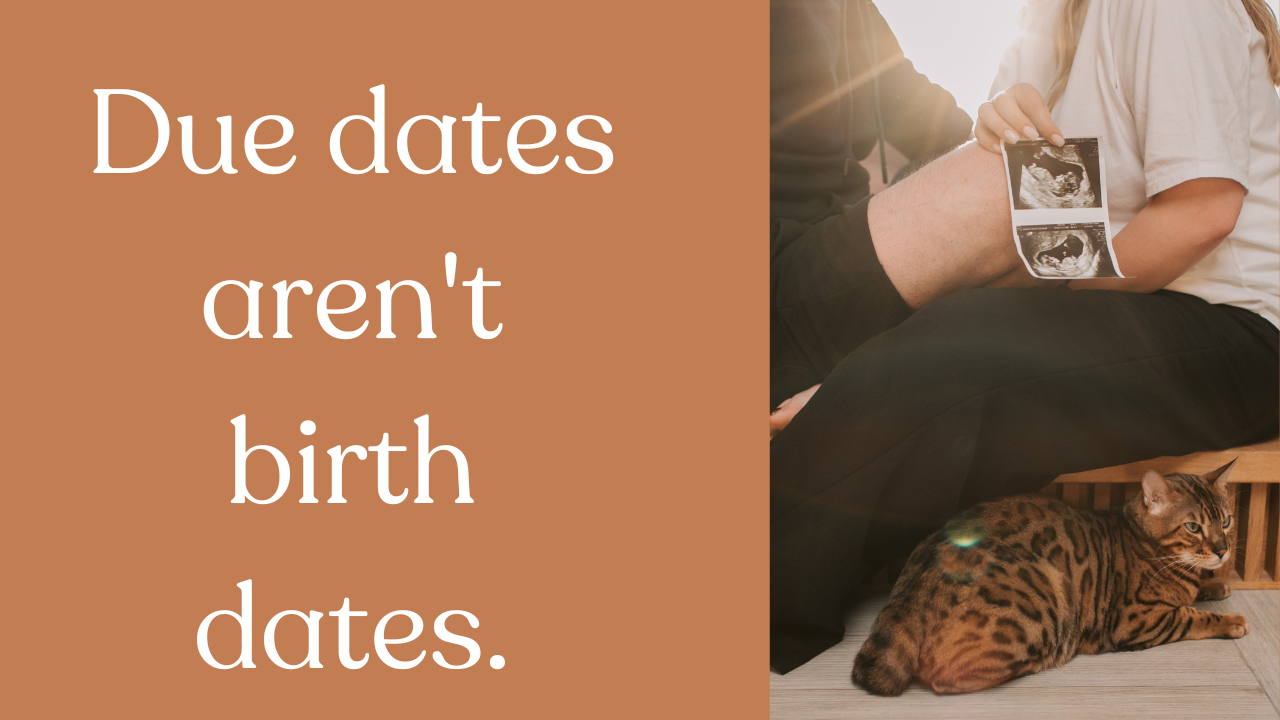
Due Dates Are Estimated: Understanding the Realities of Birth Timing
May 31, 2023The Importance of Due Dates: Over 40% of birthing individuals reported conversations about induction in relation to their due date in a survey conducted in 2017. With such a large percentage of people contemplating medical induction, in order to make an informed decision it's crucial to understand the nature of due dates.
Due Dates Are Estimated: To comprehend due dates fully, we must acknowledge that they are merely estimates. Determining an exact due date is challenging due to the natural variations in human gestation periods and menstrual cycles. Typically, due dates are calculated based on a presumed 28-day menstrual cycle. However, the reality is that cycles can range from 25 to 35 days or even longer.
If your due date is calculated based on a 28-day cycle, and you have say a 31-day cycle it's important to note that it may be three days earlier than your actual estimated due date, for example. Sharing your ovulation date with your medical care provider can help establish a more accurate estimated due date.
Ultrasound and Due Dates: Ultrasounds are another method used to determine due dates. However, their greatest accuracy is limited to a window between 11 and 14 weeks of gestation. Ultrasounds during this timeframe provide a reliable estimation. However, ultrasounds conducted before 11 weeks or after 14 weeks become less accurate in pinpointing an exact due date.
It's important to recognize that late ultrasounds may offer valuable insights into your baby's development, but they cannot provide an accurate estimate of when your baby will be born.
The Reality of Labor Timing: The assumption that all pregnancies should follow a 40-week gestation period is a common misconception. Data analysis reveals that only half of first-time birthing individuals spontaneously go into labor by 40 weeks and one day. Therefore, it is incorrect to consider yourself overdue if you haven't gone into labor by your due date.
By 41 weeks and two days, around 75% of first-time birthing individuals will have started labor spontaneously. This means that 25% will require discussions about induction with their medical care provider. It's crucial to have open and informed conversations about induction options when necessary.
Understanding the Risks of Staying Pregnant vs. Risks of Induction: Inductions may be recommended after 41 weeks to mitigate the risk of stillbirth. The risk of stillbirth increases significantly after 42 weeks, prompting the American College of Obstetricians and Gynecologists to recommend induction before that point. However, it's worth noting that individual factors, goals, and perceptions on medicine and risk will influence decisions regarding induction.
A recent study (the ARRIVE study) suggests a higher risk of cesarean birth after 39 weeks, leading some medical care providers to offer elective induction at this stage. However, it's important to consider other methods to reduce the risk of cesarean section, such as having a birth doula, which has been shown to decrease the likelihood of a cesarean birth by 37%.
Conclusion: In conclusion, due dates are estimated, not set in stone. Instead of fixating on a single day, it's more appropriate to think of birth within a five-week window between 37 and 42 weeks. Remember that only half of all individuals spontaneously go into labor by 40 weeks. While it's wise to have your labor bags packed at 37 weeks, don't be alarmed if you don't go into labor until 41 weeks. Embrace the excitement or trepidation that comes with early labor, as everyone's birthing journey is unique.



